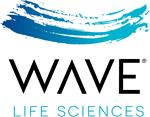Wave Life Sciences Provides Positive Update on Proof-of-Concept Study for WVE-N531 in Duchenne Muscular Dystrophy
53% mean exon skipping and <1% (BLQ) mean dystrophin expression six weeks after initiating biweekly multidosing
PN chemistry improved pharmacology of WVE-N531 compared with Wave’s first-generation DMD program – demonstrated high muscle concentrations with a mean of 42 micrograms/gram
WVE-N531 appeared safe and well tolerated
Third Wave clinical trial evaluating a PN chemistry-containing compound to achieve target engagement in 2022
Wave to host investor conference call and webcast at
“These data provide early evidence that WVE-N531 is working as intended, leading to substantial exon skipping after just three consecutive doses. This is the earliest timepoint at which exon skipping has been reported in a clinical trial of boys with DMD,” said
“There remains a significant unmet need in DMD for new treatment options. It is exciting to see this level of exon skipping in a short period of time, especially since skipping would be expected to increase over a longer dosing interval,” said
Three ambulatory boys participated in this open-label, intra-patient dose escalation clinical trial (NCT04906460). The boys received single escalating doses of 1, 3, 6 and 10 mg/kg; and in the multidose portion of the study, the same boys received three doses of 10 mg/kg every other week. A muscle biopsy was taken two weeks after the third and final dose (six weeks after the first dose).
Results included:
- WVE-N531 resulted in a mean tissue concentration of 42 micrograms/gram (6.1 micromolar)
- RNAscope results indicated WVE-N531 is reaching the nucleus in muscle cells
- WVE-N531 resulted in mean exon skipping of 53% (range: 48-62%) as measured by RT-PCR
- Mean dystrophin production was 0.27% of normal as measured by Western blot, which was below the level of quantification (BLQ: 1%)
- Plasma concentrations and other pharmacokinetic parameters following a single dose of 10 mg/kg demonstrate a half-life of 25 days, which may support monthly dosing
- Adverse events were all mild, except for a COVID-19 infection of moderate intensity. There were no serious adverse events, no trends in labs, and no oligonucleotide class-related safety events.
“These data indicate PN chemistry can improve potency, distribution and durability of splicing oligonucleotides without needing peptide or antibody conjugates, clearly demonstrating the increasing potential of Wave’s PRISM platform,” said
Investor Conference Call and Webcast
Wave management will host an investor conference call today at
Analysts planning to participate during the Q&A portion of the live call can join the conference call at the audio conferencing link available here. Once registered, participants will receive the dial-in information. Following the live event, an archived version of the webcast will be available on the
About Duchenne Muscular Dystrophy
Duchenne muscular dystrophy (DMD) is a fatal X-linked genetic neuromuscular disorder caused predominantly by out-of-frame deletions in the dystrophin gene, resulting in absent or defective dystrophin protein. Dystrophin protein is needed for normal muscle maintenance and operation. Because of the genetic mutations in DMD, the body cannot produce functional dystrophin, which results in progressive and irreversible loss of muscle function, including the heart and lungs. Worldwide, DMD affects approximately one in 5,000 newborn boys. Approximately 8%-10% of boys with DMD have mutations amenable to treatment with an exon 53 skipping therapy. Exon skipping aims to address the underlying cause of DMD by promoting the production of dystrophin protein to stabilize or slow disease progression.
About PRISMTM
PRISM is Wave Life Sciences’ proprietary discovery and drug development platform that enables genetically defined diseases to be targeted with stereopure oligonucleotides across multiple therapeutic modalities, including silencing, splicing and editing. PRISM combines the company’s unique ability to construct stereopure oligonucleotides with a deep understanding of how the interplay among oligonucleotide sequence, chemistry and backbone stereochemistry impacts key pharmacological properties. By exploring these interactions through iterative analysis of in vitro and in vivo outcomes and machine learning-driven predictive modeling, the company continues to define design principles that are deployed across programs to rapidly develop and manufacture clinical candidates that meet pre-defined product profiles.
About Wave Life Sciences®
Forward-Looking Statements
This press release contains forward-looking statements within the meaning of the Private Securities Litigation Reform Act of 1995, as amended, including, without limitation, our understanding of the anticipated therapeutic benefit of WVE-N531 as a therapy for DMD; our understanding of the cause of DMD and the potential addressable patients amenable to treatment with an exon 53 skipping therapy; our expectations that the level of exon skipping would be expected to increase over a longer dosing interval; our expectation that dystrophin protein production would lag splicing of the RNA transcript; our beliefs regarding the learnings gained from our first-generation DMD program; our expectation regarding the continued progression of clinical research for WVE-N531; and the potential benefits of PRISM, including our novel PN backbone chemistry modifications, and our stereopure oligonucleotides compared with stereorandom oligonucleotides. The words “may,” “will,” “could,” “would,” “should,” “expect,” “plan,” “anticipate,” “intend,” “believe,” “estimate,” “predict,” “project,” “potential,” “continue,” “target” and similar expressions are intended to identify forward-looking statements, although not all forward-looking statements contain these identifying words. Any forward-looking statements in this press release are based on management's current expectations and beliefs and are subject to a number of risks, uncertainties and important factors that may cause actual events or results to differ materially from those expressed or implied by any forward-looking statements contained in this press release and actual results may differ materially from those indicated by these forward-looking statements as a result of these risks, uncertainties and important factors, including, without limitation, the risks and uncertainties described in the section entitled “Risk Factors” in Wave’s most recent Annual Report on Form 10-K filed with the
Investor Contact:
617-949-4827
InvestorRelations@wavelifesci.com
Media Contact:
617-949-4817
asuter@wavelifesci.com

Source: Wave Life Sciences USA, Inc.

